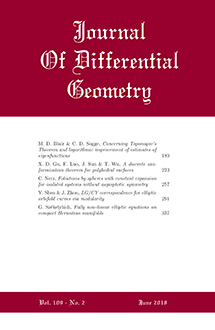Articles
Simon Brendle, Fernando C. Marcques
F. Reese Harvey, H. Blaine Lawson Jr.
Andreas Leopold Knutsen, Angelo Felice Lopez, Roberto Muñoz
Dusa McDuff
David Shea Vela–Vick

